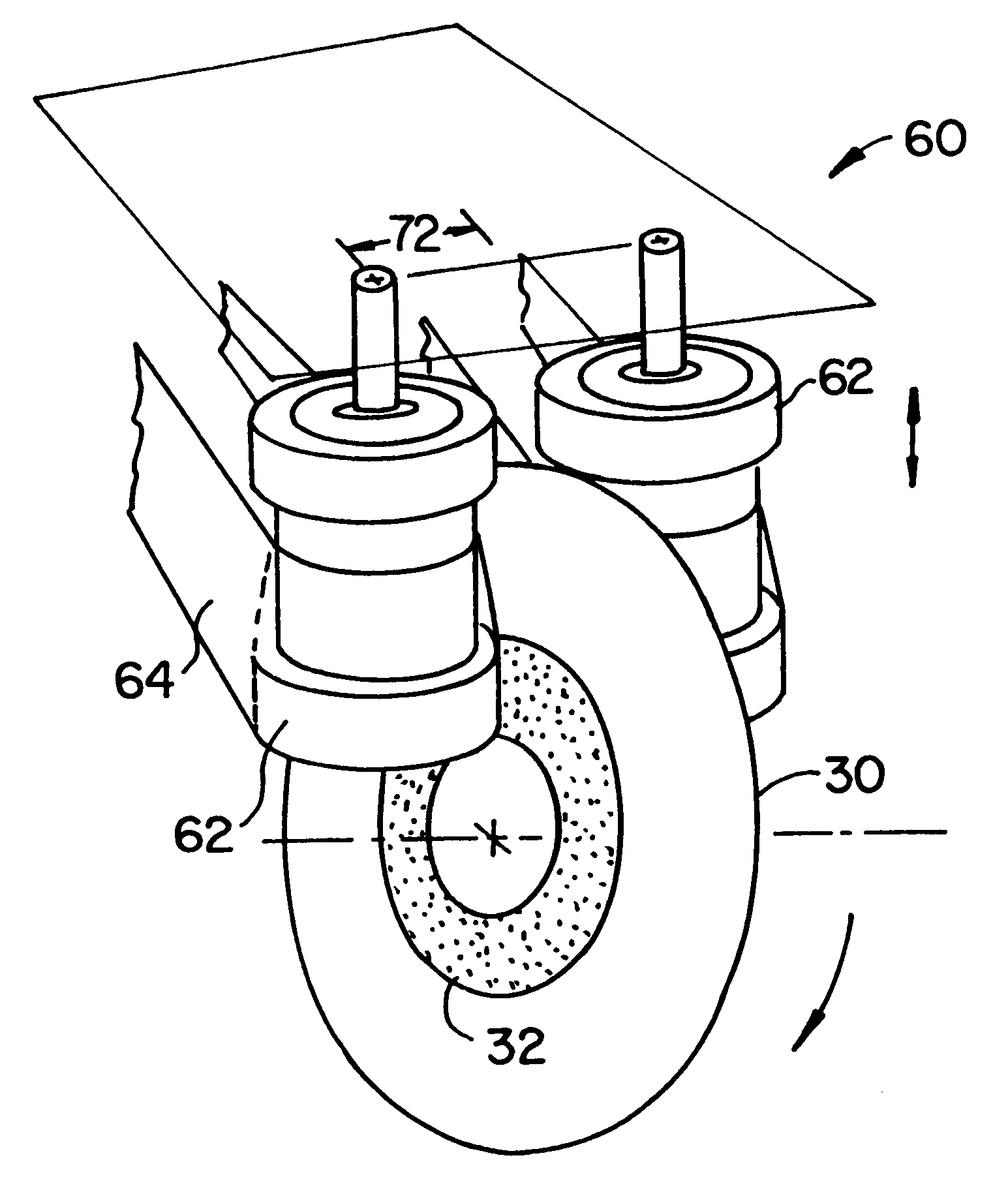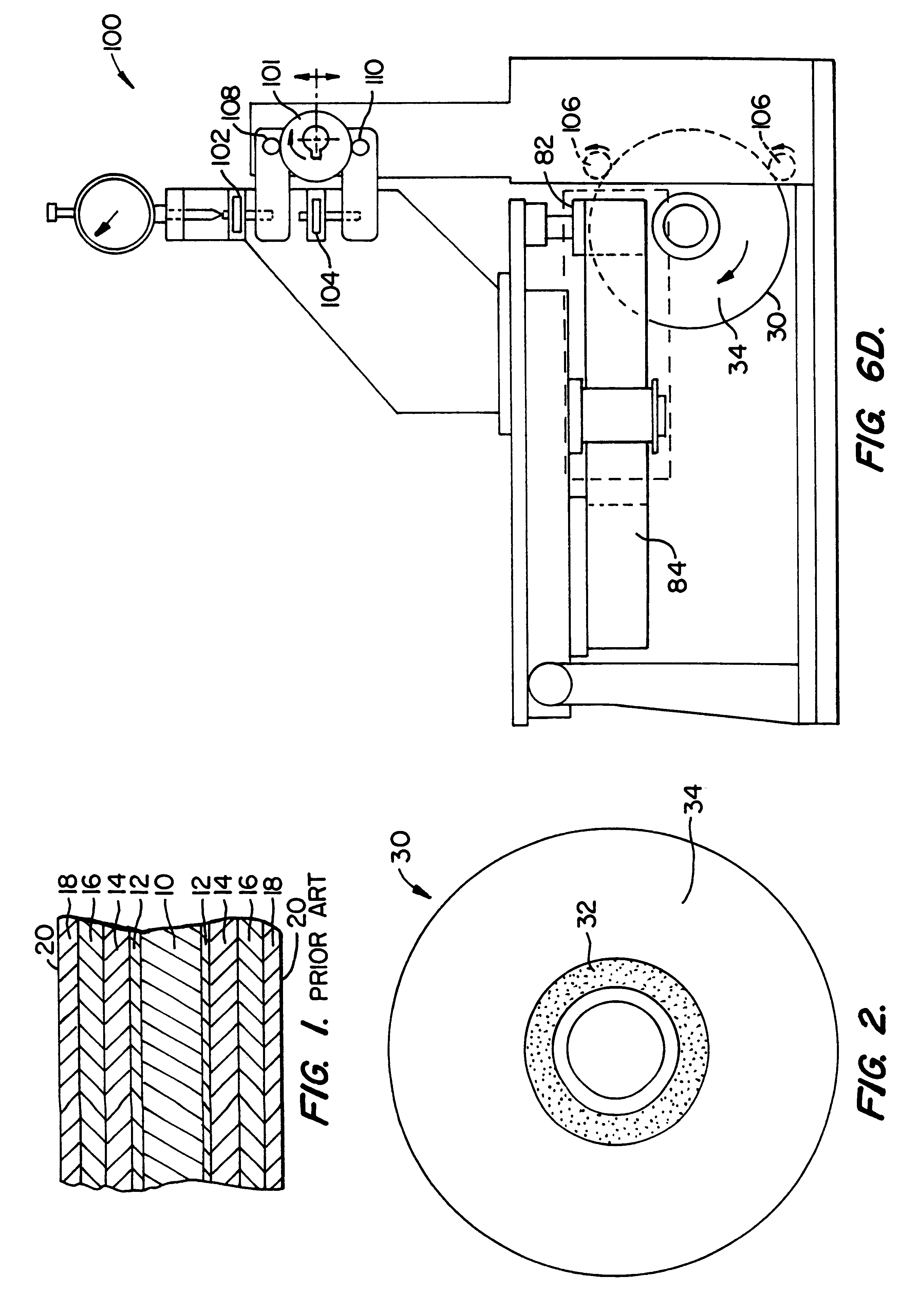Abrasive tape for texturing magnetic recording media
- Summary
- Abstract
- Description
- Claims
- Application Information
AI Technical Summary
Benefits of technology
Problems solved by technology
Method used
Image
Examples
Embodiment Construction
Referring now to FIG. 2, magnetic recording media according to the present invention will usually be in the form of a magnetic recording disk 30 having a contact start stop zone 32 and a data zone 34. These zones are distinguished by the surface texture, the properties of which will be described with reference to the outermost surface of the disk as it is used in a magnetic recording system. The actual texturing processes may be performed on the substrate, on an underlayer below the magnetic recording layers, on the magnetic recording layer itself, or on an overlayer.
Typically, an underlayer is textured, most commonly an Ni--P layer. The average surface roughness, and other surface topology described herein, refers specifically to the surface characteristics of the outermost layer, rather than the characteristics of the textured surface prior to application of any overlayers. Although the data zone is shown in an outward location, the relative radial position of the zones may be rev...
PUM
 Login to View More
Login to View More Abstract
Description
Claims
Application Information
 Login to View More
Login to View More - R&D
- Intellectual Property
- Life Sciences
- Materials
- Tech Scout
- Unparalleled Data Quality
- Higher Quality Content
- 60% Fewer Hallucinations
Browse by: Latest US Patents, China's latest patents, Technical Efficacy Thesaurus, Application Domain, Technology Topic, Popular Technical Reports.
© 2025 PatSnap. All rights reserved.Legal|Privacy policy|Modern Slavery Act Transparency Statement|Sitemap|About US| Contact US: help@patsnap.com



